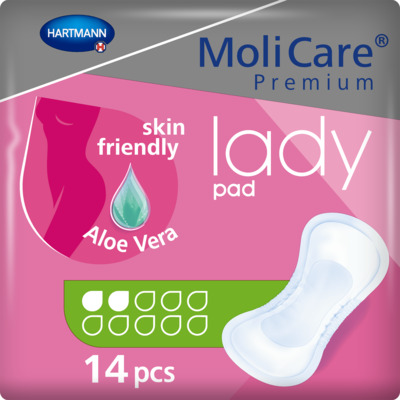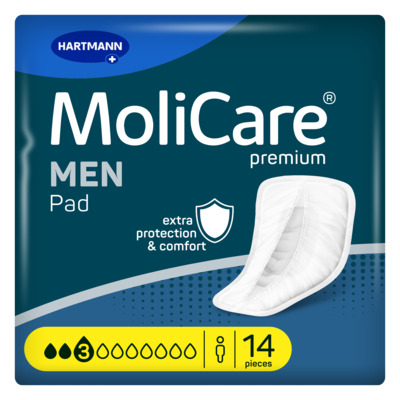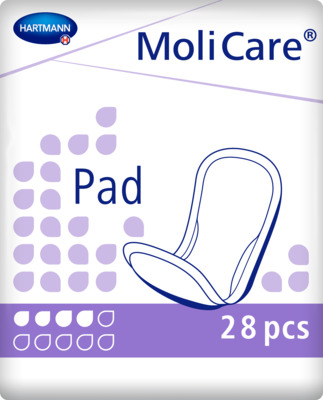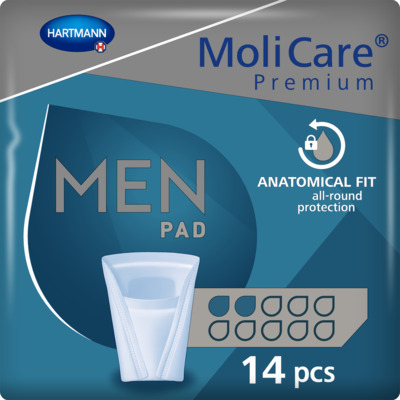Active living
Incontinence When Exercising: Best Exercises For A Weak Bladder
Don’t let bladder leakage prevent you from exercising. Discover how to improve your fitness routine with the right exercises and manage incontinence while exercising effectively. Bladder leakage during exercise, especially weightlifting, is more common than you might think. In this article, you will learn about the link between weightlifting and bladder leakage, as well as effective strategies and exercises designed to strengthen the pelvic floor and ease bladder leakage. From understanding the causes of urinary incontinence to exploring practical exercises and lifestyle tips, we provide essential tips to help you exercise confidently and comfortably. Key points: Understand the link between weightlifting and bladder leakage. Learn the best exercises for strengthening the pelvic floor. Discover lifestyle changes that can help manage symptoms. Gain tips on how to incorporate these strategies into your daily routine.

Copyright: PAUL HARTMANN
Why does bladder leakage occur during workouts?
Otherwise referred to as stress urinary incontinence (SUI), bladder leakage when exercising is a common issue for many people. This condition arises when the pelvic floor muscles, which support the bladder, become weakened. Such weakening can result from a variety of activities that increase abdominal pressure, including coughing, sneezing, and high-impact exercises.
Factors like childbirth, obesity, ageing, and certain surgical procedures also contribute to the weakening of these muscles, making exercises for bladder leakage essential for those affected.
Find out how to stop urine leakage when coughing using the simplest techniques.
Causes of urinary incontinence
Several triggers can lead to urinary incontinence, from dietary choices like caffeine and alcohol, which may irritate the bladder, to medications that relax the bladder muscles. It’s not just about what you consume or the medications you take; underlying health conditions such as urinary tract infections, constipation, or chronic diseases like diabetes and neurological disorders can also exacerbate bladder weakness. Understanding these causes is crucial for managing incontinence when exercising.
Experiencing incontinence when exercising
For many, the experience of urinary incontinence during a workout might be as minor as a small leak, particularly during moments of increased abdominal pressure. Risk factors can vary, including gender, with women typically more susceptible, and lifestyle factors such as smoking and obesity.
The role of the pelvic floor in exercise
The pelvic floor muscles do more than just support the bladder; they are integral to the overall stability and strength of your lower body. They help control the discharge of urine and faeces and are crucial for any activity that requires abdominal pressure, such as lifting weights or other compound movements.
Bladder strengthening: the connection between weightlifting and bladder control
Weightlifting can sometimes put stress and strain on the pelvic floor, especially during heavy lifts that increase intra-abdominal pressure. Understanding this connection is vital for anyone involved in strength training. Implementing exercises for a weak bladder can improve core strength as well as deter unforeseen consequences of bladder leakage.
Risk factors
Several factors can provoke incontinence when exercising, including:
Excess weight increases pressure on the bladder and pelvic floor muscles.
Smoking can lead to chronic coughing, which stresses the pelvic floor muscles.
Sports that involve running, jumping, or abrupt movements can strain the pelvic area.
Particularly if forceps or other interventions were used, which can weaken pelvic muscles.
Chronic conditions such as persistent coughs or neurological issues that affect muscle control.
Find the right product for you
Use our product finder to find the right product for you
Find your product Find the right product for you5 exercises for bladder leakage
Managing incontinence while exercising doesn't just improve comfort; it also enhances performance and confidence. Below are five targeted exercises designed to strengthen the pelvic floor and ease bladder weakness.
1. Kegel exercises
Kegel exercises are crucial for both men and women experiencing bladder leakage. These exercises strengthen the pelvic floor muscles, which support the bladder and reduce the likelihood of incontinence.
How to perform kegels:
Identify the muscles used to halt urination.
Contract these muscles for five seconds, then relax for five seconds.
Repeat this cycle 10 times, three times a day.
The goal is to build up to maintaining the contraction for 10 seconds, with a 10-second rest in between.
Safety Note: Kegels should never cause pain. If discomfort occurs, cease the exercise and consult a healthcare provider. Ensure not to over-tighten the pelvic muscles, as this could lead to dysfunction.

2. Squats
Squats, as well as being an integral compound exercise for training legs, are beneficial for improving your core, body stability, and pelvic floor strength, which in turn supports bladder control.
Steps for proper squats:
Stand with feet hip-width apart.
Lower into a squat while keeping the back straight and knees behind the toes.
Hold the lowest position for a few seconds, then return to standing.
Perform two sets of 10 repetitions, ensuring to tighten the pelvic floor as you stand.

3. Bridge
Bridges are excellent for reinforcing the glutes and pelvic muscles, which play a role in urinary control.
How to make a bridge:
Lie on your back with knees bent and feet flat on the floor, arms by your sides.
Raise your hips to create a straight line from knees to shoulders.
Tighten the pelvic floor as you lift your hips, hold for three seconds, then lower slowly.
Aim for three sets of 10 repetitions.

4. Skipping rope
Incorporating a skipping rope into your routine helps strengthen the pelvic muscles through continuous bouncing, which can improve bladder control over time.
How to use a skipping rope:
Start with light, two-minute sessions and gradually increase as your pelvic floor strength improves.
Use the skipping rope activity as a warm-up or integrate it into a circuit training session.
Remember, some initial leakage is normal; continue the exercises to see gradual improvement.

5. Squeeze and release
This exercise is a rapid version of Kegels, designed to quickly contract and relax the pelvic floor muscles, improving their responsiveness.
How to do squeeze and release:
Sit, stand, or lie with knees slightly apart.
Rapidly contract the pelvic muscles for one second, then release.
Complete 10-15 repetitions, three times a day.
Other ways to manage urinary incontinence when exercising
Diet
What you eat plays a vital role in managing bladder weakness. Foods and drinks that irritate the bladder and bowels and digestive system are often high in sugar or processed.
To counteract this, incorporate high-fibre, bladder-cleansing foods into your diet. Foods like fruits, vegetables, and whole grains not only improve digestion but also help bulk up stool, reducing the likelihood of both bladder and bowel leakage.
Regular exercise
Consistent exercise can aid overall health and aids in managing symptoms of a weak bladder. Activities such as walking, swimming, biking, and yoga not only help you to lose excess weight but also strengthen various muscle groups, including those vital for bladder control.
Find out about the benefits of yoga for over 50s if you are unconvinced about its advantages.
Bladder training
Are you unsure on how many times a day you should wee? Training your bladder can be an effective way to manage urinary incontinence.
Start by extending the time between toilet visits by a few minutes each day, and gradually increase this interval. This method helps increase bladder capacity and control. However, it's important not to overstrain; if you feel pain, reduce the interval to prevent potential health issues like urinary tract infections (UTIs).
Absorbent products and protective clothing
This is where Hartmann Direct UK can greatly help you to improve comfort during sports and fitness activities. For those that are physically active, using net and fixation pants specifically designed for exercise can provide security and confidence.
Additionally, wearing dark or black clothing can discreetly conceal any leakage incidents, allowing you to remain comfortable and focused during workouts.
Visit our site and shop now for the latest, high quality incontinence products and much more:
Lifestyle
Sometimes, the simplest changes can be made by altering your lifestyle:
Underwear liners can be particularly helpful during physical activities, providing an extra layer of protection.
Emptying the bladder before beginning an exercise session can drastically reduce the chances of leakage.
Since caffeine is a diuretic and bladder irritant, reducing your intake can help manage incontinence symptoms. Instead, opt for these bladder friendly drinks!
When to consult a healthcare professional
It's advisable to see a healthcare professional if:
Incontinence affects your daily life or is worsening.
You experience other symptoms like pain or unusual discomfort.
There is a noticeable decrease in the quality of your life due to incontinence.
Please note, your healthcare provider may conduct various tests to diagnose the condition accurately, such as:
Physical and pelvic examinations
Urine tests
Ultrasound
Urodynamic tests
Use these exercises to ease bladder weakness
Effective management of incontinence when exercising isn't just about performing pelvic floor exercises; it involves multiple approaches, including diet, lifestyle changes, and possibly medical interventions. By understanding the complexities of this condition and the available management strategies, you can effectively combat bladder leakages and prevent them when exercising.
FAQs
Are only women affected with incontinence while exercising?
No, incontinence while exercising can affect both men and women, although it is more common among women due to factors like childbirth and menopause.
Will I need surgery for urinary incontinence when exercising?
Surgery is not always necessary for urinary incontinence related to exercise. Many people manage or improve their symptoms through non-surgical methods such as pelvic floor exercises, medications, or lifestyle changes.
Can incontinence be prevented by consuming less fluids?
Reducing fluid intake is not a recommended way to prevent incontinence and can be harmful. It's important to stay hydrated. Managing the types of fluids consumed and timing fluid intake can be more effective strategies.
How can I strengthen my bladder from leaking?
Strengthening your bladder can be achieved through pelvic floor muscle exercises, known as Kegel exercises, which help tighten and hold the muscles that control urine flow.
Does drinking more water help bladder leakage?
While it may seem counterintuitive, maintaining adequate hydration can actually help reduce bladder leakage. Concentrated urine can irritate the bladder and exacerbate leakage, while sufficient fluid intake helps maintain normal bladder function.
What should you not do if you have incontinence?
If you have incontinence, avoid heavy lifting, which can put pressure on the bladder and increase leakage. Also, limit intake of irritants like caffeine, alcohol, and spicy foods that can worsen symptoms.
Can you run with incontinence?
Yes, you can run with incontinence. However, it may trigger or worsen leakage for some individuals. Using incontinence pads, practising pelvic floor exercises, and planning bathroom breaks can help manage symptoms during running.
What worsens incontinence?
Incontinence can be worsened by obesity, smoking, heavy lifting, constipation, and the consumption of bladder irritants such as caffeine, alcohol, and spicy foods. Certain medications can also exacerbate incontinence symptoms.
Sources
Lindberg, S., (2023) 7 Benefits of Doing Squats and Variations to Try. Healthline. [online] Available at: https://www.healthline.com/health/exercise-fitness/squats-benefits [accessed 12/07/24]
Quinn, E., (2024) Glute Bridge Exercise: Proper Form, Variations, and Common Mistakes. Very Well Fit. [online] Available at; https://www.verywellfit.com/how-to-do-the-bridge-exercise-3120738 [accessed 12/07/24]

MoliCare® Premium Lady Pad 2 Drops
<h2>Skin Friendly Pant Liners</h2> <p>For women that experience slight incontinence and bladder weakness, across different age groups, it can be a challenge to find the right bladder weakness product that is easy to apply and wear without the worry of potential leakages. Fortunately, we understand this approach, hence why we are happy to offer our MoliCare® Premium Lady Pad 2 drops, that is skin-friendly, Aloe Vera applied, and comes with 14 liners per bag.</p> <h2>Slim and discreet liners</h2> <p>Whether dealing with stress incontinence or urge incontinence, these panty liners offer a discreet and easy solution on the go. Simply place the pad in your underwear and secure it with the adhesive strip for all-round protection. Available in different absorbency levels, MoliCare® bladder weakness products cater to all levels of bladder weakness, ensuring secure care.</p> <h2>Control Bladder Weakness</h2> <p>Enjoy the benefits of these body-shaped absorbent panty liners, designed for women with bladder weakness. The pads offer discreet, reliable protection with features including odour control and fast absorption.</p> <p>With a wide adhesive strip, you can comfortably fix the pad in your regular underwear, providing secure and comfortable fixation. The pads are skin-friendly, featuring soft, breathable materials, including foam cuffs, and a top sheet treated with Aloe Vera.</p> <p>Keeping your skin healthy is a priority, which is why MoliCare® Premium Lady Pads have a skin-neutral pH value of 5.5 and an antibacterial finish. They are also dermatologically tested, offering peace of mind.</p> <h2>Buy pant liners online</h2> <p>Never worry about running out with our convenient order service and fast delivery direct to your door. Enjoy free shipping on orders over £50.</p> <p>If you need assistance, our professional customer service team is here to support you in choosing the right product. Reach out to us today at 0800 028 9470 and experience the comfort and reliability of MoliCare® Premium Lady Pads.</p>
MoliCare® Premium Men Pad 3 Drops (ISO 441ml)
<p><strong>Reliable and discreet incontinence pads for men with an instant-dry feeling</strong></p> <p>Bladder weakness is difficult to live with, the last thing you want to worry about is incontinence protection. That’s why our best-ever MoliCare® premium MEN Pad 3 drops offer an <strong>all-round protection</strong> that keeps everything dry and comfortably in place while fitting discreetly in your regular underwear.</p> <p>The incontinence pad for men quickly <strong>removes urine from the surface up to 86 %* faster than before</strong> and neutralises unpleasant odours to leave you feeling instantly dry and in control thanks to the new <strong>MoliCare SkinGuard</strong>®<strong> Absorbent Core Technology</strong>. This skin-friendly technology not only helps you feel up to 90 %* drier than previous MoliCare® premium<strong> </strong>MEN pads, it also helps to maintain healthy skin and preventing irritation.</p> <p><strong>Engineered for the male anatomy</strong> and dermatologically tested for maximum skin compatibility, these male urinary pads do not contain colour, perfume or latex making them environmentally friendly too.</p> <p>*Compared to last generation</p>
MoliCare® Pad 4 Drops
<h2>Handy MoliCare incontinence pads to carry on the go</h2> <p>Our MoliCare® Pad 4 Drops are an essential product for those experiencing slight incontinence, allowing you to regain control and live your busy and active life without the interference of bladder weakness. Designed for both men and women, this incontinence pad for men and women offers exceptional dryness and protection, ensuring your comfort and confidence.</p> <h2>‘Barely There’ Reassurance and Reliability</h2> <p>The MoliCare® Pad 4 Drops are slimline, discreet, and adjusted to fit your body seamlessly. It fixes securely inside your underwear, providing a ‘barely there’ comfort feel. With its soft and skin-kind fabric, along with a wide adhesive fixing strip on the backsheet, you can go about your day with the assurance of being protected against leakages.</p> <p>The absorbent core effectively prevents your skin from becoming too moist, while the elastic anti-leak edging adds an extra layer of security and peace of mind. Say goodbye to any worries about odours, as the MoliCare® Pad 4 Drops also neutralises odours to keep you fresh and confident throughout the day. Don't let incontinence hold you back from living life to the fullest.</p> <p>Ordering your MoliCare® Pad 4 Drops is hassle-free, as we offer fast delivery direct to your door. With our price match promise, you can trust that you're getting the best value for your money. Plus, enjoy free delivery on all orders over £50.</p> <p>If you need assistance in finding the perfect incontinence product for your needs, our friendly customer care team is here to help. Don't hesitate to reach out to us at 0800 028 9470. Take control of your life with the reliable protection and comfort of the MoliCare® Pad, alongside other <a href="https://www.hartmanndirect.co.uk/incontinence-products/incontinence-pads" style="color:#0563c1; text-decoration:underline">incontinence pads</a>.</p>
